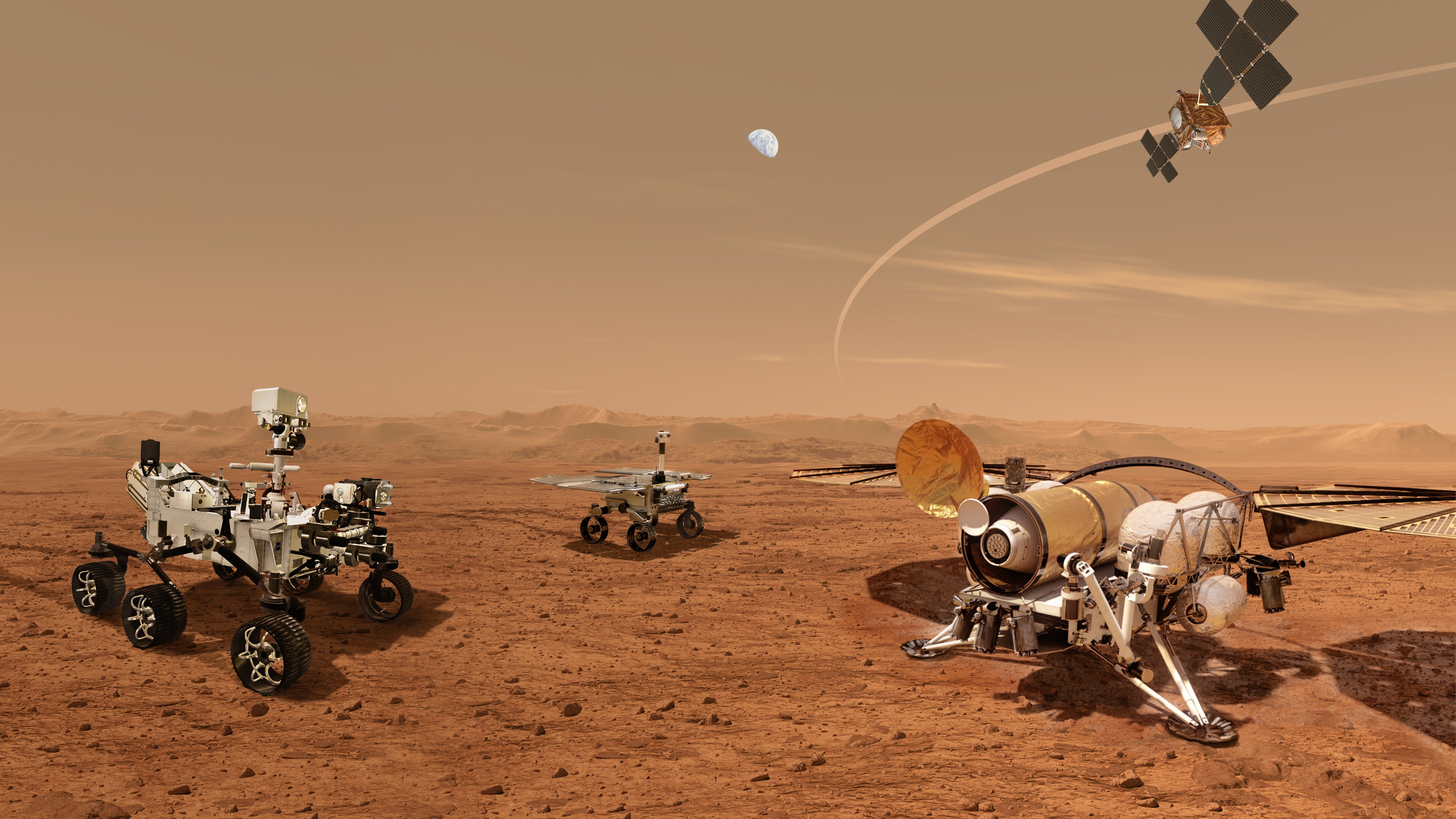How hard is it to give birth to an Earth? To assemble the right mix of rock, metal, and water, in a balmy spot not too far from a star? For a long time, planetary scientists have thought Earth was a lucky accident, enriched with water and lighter “volatile” elements—such as nitrogen and carbon—by asteroids that had strayed in from the outer edges of the early Solar System, where those materials were abundant. But a series of new studies, including two published today inSciencesuggests all the ingredients were much closer at hand when Earth was born.
The findings, based on painstaking chemical analysis of meteorites, imply that planet-forming disks around other stars, too, should be well-stocked with the makings of wet, rocky planets that might be hospitable to life. “It makes the enrichment in volatile elements of a planet more generic,” says Alessandro Morbidelli, a planetary scientist at the Côte d’Azur Observatory who wasn’t part of the new work. Even if a young planet doesn’t receive a delivery from the far reaches of the newborn planetary system, he says, “it doesn’t change habitability.”
Not that long ago, researchers thought the giant gas and dust disk that whirled around the early Sun more than 4 billion years ago had a fairly uniform composition. But that view was challenged by studies that tallied the ratios of certain isotopes found in the dozens of known species of meteorite. They indicated that the meteorites fell into two basic groups that likely originated in zones at different distances from the Sun. One group, known as carbonaceous chondrites, appears to have originated in the outer reaches of the early Solar System, beyond a proto-Jupiter and past the disk’s “snowline,” where temperatures cooled enough to allow water to freeze. In contrast, noncarbonaceous chondrites formed closer to the Sun. The isotopic signatures also suggested each zone was fed by material forged in different ancient and distant sources, such as supernovae and red giant stars.
Until recently, scientists were only able to detect the early isotopic fingerprints in metals such as chromium, titanium, and molybdenum, which are durable enough to have resisted the heat of the newborn Sun. A close match between the isotope ratios found in noncarbonaceous chondrites and those found in the same metals on Earth suggested much of Earth’s raw material came from the same nearby region as those meteorites.
But early searches for isotopic evidence that Earth’s lighter volatile elements also originated nearby came up dry. “People just started thinking [the evidence] didn’t exist,” says Rayssa Martins, a doctoral student in geochemistry at Imperial College London (ICL). And so the traditional view of those elements’ origin persisted: Many were assumed to come from a distant source, such as an outer region of the disk, where they might have condensed and then been pulled inward by the gravity of a forming planet, such as Jupiter.
Now, however, the meteorite divide has been detected in two moderately volatile elements, potassium and zinc. And the results suggest that much, but not all, of the planet’s volatiles also came from the noncarbonaceous reservoir, says Nicole Nie, a planetary scientist at the California Institute of Technology and lead author of the potassium-focused paper. “This is a game changer for cosmochemistry.”
The work was challenging, Nie says. Although a 2020 paper had identified what looked like ancient isotopic signatures in meteorite potassium, it only used two potassium isotopes, leaving out the much rarer potassium-40, whose signature in mass spectrometers is easy to confuse with those of calcium or argon. With only two isotopes, it was impossible to confirm that what the team saw reflected the chemical makeup of the primordial disk. And so Nie and her team measured all three potassium isotopes in 32 meteorites. They found that the potassium in the noncarbonaceous rocks showed isotopic patterns quite similar to those seen on Earth. “That was really surprising,” she says. Together, the findings suggested some 80% of Earth’s potassium came from nearby sources.
Three other teams have found a similar signal in the five stable isotopes of zinc. Two of the groups published their findings inIcaruslast summer; work by the third, led by Martins, appears this week inScience. The findings complement each other, says Frédéric Moynier, a cosmochemist at the Paris Globe Institute of Physics and co-author of one Icarusstudy. “I agree with everything in the[[Science]paper, because it’s very similar to our paper.” Overall, it appears that half or more of Earth’s zinc also came from the inner Solar System.
Other volatile elements probably had a similar origin, says Mark Rehkämper, a geochemist at ICL. “Zinc is not water. But where you have zinc, you will have more water.” And although the newly formed inner Solar System was low in volatile elements overall, there was still enough to create a habitable world. “The water has been here almost from the beginning,” Moynier says.
The hunt will now be on for additional volatile elements that exhibit the primordial fingerprints, says Thorsten Kleine, director of the Max Planck Institute for Solar System Research and co-author of one of the zinc papers. “We have just written the proposals to do that, to be honest,” he says. Armed with enough data, especially for elements that are known to accumulate in a newborn planet at different stages of its growth, “you can do a detailed reconstruction of how the material that built the Earth changed over time.”
That could help resolve another question that has nagged at planetary scientists for decades: how quickly the rocky planets were built. They may have formed slowly, over tens of millions of years, as smaller rocky bodies collided with each otheror much more quickly, as vast clumps of material collapsed. The isotopes could hold clues—and not just for our Solar System. As the new work makes clear, the recipe for Earth is unlikely to be a one-off.
Note: This article have been indexed to our site. We do not claim legitimacy, ownership or copyright of any of the content above. To see the article at original source Click Here













![[Magazine] "Become a Master of Manners Useful for Life" Monthly Air Stage November 2009 Issue thumbnail](https://www.aviationwire.jp/wp-content/uploads/2021/09/210928_airstage2111-720.jpg)